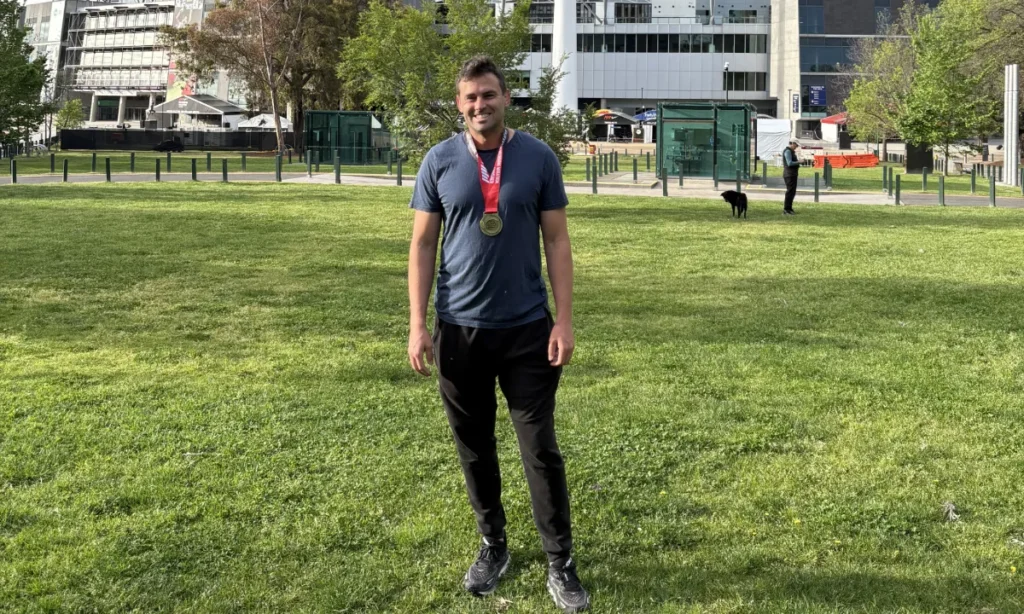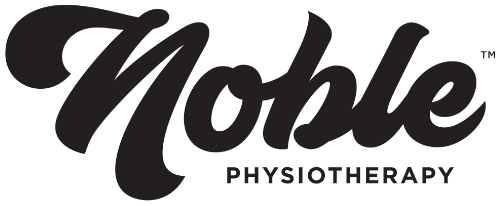My First Marathon as a Physiotherapist

As a physiotherapist, I’m always advising patients on the importance of proper preparation, pacing, and injury prevention when training for endurance events. Recently, I had the opportunity to put myself in my patients’ shoes—quite literally—by running my first marathon at the Melbourne Marathon. This experience not only challenged me physically but also deepened my understanding of what many runners go through, which will certainly influence how I work with patients moving forward.
9 Weeks of Training: Not Enough
I trained for just 9 weeks leading into the marathon, which, in hindsight, I believe was underdone. The reason for the short training block was that my soccer season had just ended, leaving me with 9 weeks to prepare for the marathon. My goal was to finish under 4 hours, and I’m proud to say I achieved this, clocking in at 3:57. However, the last 10km were grueling. I started strong, maintaining a pace of 5:10min/km for the first 32km, but by the end, I was down to 7min/km.
Ideally, marathon training should span a minimum of 14-16 weeks, allowing enough time to gradually build endurance, increase mileage, and adapt to the demands of long-distance running. As a physiotherapist, I recognize now that having more time to build a stronger aerobic base and gradually increase my long slow runs would have helped me better adapt to the marathon’s demands. The shorter training period didn’t give me enough opportunity to condition my body to handle the full 42km comfortably.
Next time, I’ll focus on extending my training plan and gradually introducing longer runs to improve endurance and prevent that dreaded “wall” in the final 10km.
The Power of the Right Shoes
Running shoes made a massive difference in my marathon experience. For most of my training, I wore the cushioned HOKA Clifton 9, which provided excellent support and comfort over long runs. On race day, however, I switched to the Nike Alpha Fly 3. These shoes are marketed as the best marathon racing shoes for speed, and I could definitely feel the difference. The carbon plate and extra bounce significantly reduced the perceived effort, especially on my calves.
That said, by the end of the run, my feet were extremely sore, and the shoes felt quite hard. Perhaps it’s just the reality of running 42km, where any shoe will eventually cause discomfort. Nevertheless, I’m not sure if this is an unfair criticism, but I’ll consider it for my next race. For patients, I’d now emphasize even more the importance of shoe choice and the impact different types of shoes can have on performance and injury prevention.
Nutrition and Hydration: Lessons Learned
One of the key lessons I learned during the marathon is the importance of having a solid nutrition and hydration strategy. I aimed to take gels every 40 minutes, which I stuck to during the race, but in hindsight, I believe I needed to take them more frequently to maintain my energy levels. Around the 30km mark, I began to feel my energy drain. For my next marathon, I plan to take gels every 30 minutes to ensure I have a more consistent source of fuel throughout the run.
Before the race, I ate two peanut butter and jam sandwiches, which had been a staple in my training routine. I also made sure to carb load during the two days leading up to the marathon, consuming plenty of pasta, rice, and bread to top up my glycogen stores. While this approach worked reasonably well, I now realize the importance of timing and consistency during the race itself. For patients, this reinforces the need to plan a fueling strategy not only for race day but also in the days leading up to the event to maximize performance.

Strength Training: A Key Component
For several years, I dealt with persistent calf issues that made me believe running a marathon was out of the question. However, incorporating a solid lower body resistance program into my routine was a game changer. I focused on simple but effective exercises, including calf raises, lunges, leg press, leg extensions, and hamstring curls. I performed these exercises to fatigue, 1-2 times per week, and over time, I noticed a significant improvement in both strength and durability.
This approach helped me recover from the recurring calf concerns that had been holding me back. For anyone training for a marathon, especially those dealing with persistent injuries or weaknesses, strength training is crucial. A targeted program not only helps prevent injury but also enhances overall performance. From a physiotherapist’s perspective, I now emphasize to my patients that strength training should be an integral part of their running preparation, as it was for me.
The Electric Atmosphere
One of the highlights of the marathon was the incredible atmosphere. Melbourne truly put on a spectacular event, and the energy from the crowd was palpable. Every stretch of the course had supporters cheering us on, which helped carry me through those tough moments when fatigue was setting in. The sense of community and support is something I’ll never forget, and it’s one of the main reasons I’m already considering signing up for another marathon.
For my patients who are training for events, I’ll be reminding them that the mental boost from the crowd and the atmosphere can be just as valuable as any physical preparation.
Professional Growth: Running and Physiotherapy
With the recent explosion in running groups and the increasing popularity of running in general, I’m seeing more and more patients with goals of running a marathon or who are already in marathon training. As a physiotherapist, I’m often asked for advice on injury prevention, training strategies, and recovery tips for runners. For my professional development, it was important for me to experience this for the first time and go through the rigors of a marathon training program myself.
By running a marathon, I now have a firsthand understanding of the physical and mental demands of this type of event. This allows me to better equip my patients with the knowledge, empathy, and guidance they need to achieve their running goals—whether they’re first-time marathoners or seasoned runners looking to push themselves further.
How This Experience Will Shape My Physiotherapy Practice
This marathon has given me a deeper understanding of the physical and mental challenges that runners face. Going through the training, the highs and lows of race day, and learning from my mistakes will help me better connect with and guide my patients in the future. Whether it’s advising on a training plan, nutrition, or shoe choice, I now have firsthand experience that will enhance the quality of care I provide.
